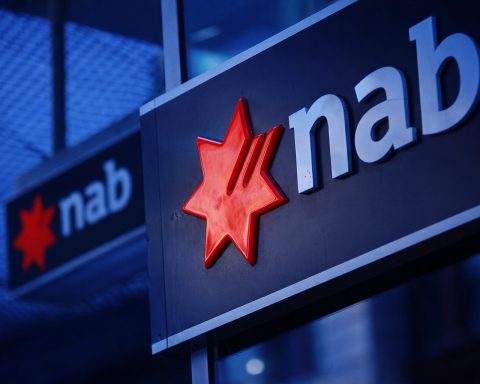Dateline: Mumbai | November 11, 2025
Summary: Bajaj Finserv reported a steady September-quarter profit, while flagship lender Bajaj Finance delivered robust growth but trimmed its FY26 asset‑growth outlook, triggering a sharp sell‑off in both counters on Tuesday.
Bajaj Finserv Q2 FY26: Profit holds up; revenue grows 11%
Bajaj Finserv reported net profit of ₹2,244 crore for Q2 FY26 with revenue from operations up 11% to ₹37,403 crore. On a consolidated basis, profit rose ~7.5% year‑on‑year, while on a standalone basis the rise was 23.9%, aided by higher dividend income from lending and insurance subsidiaries. Management also highlighted steady underlying operating performance across businesses. [1]
Subsidiary snapshot:
- Bajaj Finance: Profit up ~22% YoY; AUM up 24%.
- General insurance: Profit ₹517 crore (+5% YoY).
- Life insurance: Value of New Business (VNB) ₹367 crore (+50% YoY) even as profit moderated amid GST input credit dynamics. [2]
Strategic backdrop: Following approvals to acquire Allianz’s 26% stakes, the insurance JVs have been rebranded as Bajaj General Insurance and Bajaj Life Insurance, consolidating the group’s control over insurance. [3]
Bajaj Finance Q2 FY26: Strong topline, sticky credit costs
Bajaj Finance’s investor presentation shows consolidated PAT at ₹4,948 crore (↑23% YoY), AUM at ₹4,62,261 crore (↑24% YoY), and net interest income at ₹10,785 crore (↑22% YoY). Gross/Net NPAs stood at 1.24%/0.60%, respectively. Loan losses and provisions rose 19% to ₹2,269 crore, keeping credit cost elevated. [4]
Funding & operating levers: Cost of funds improved to 7.52% in Q2 (down 27 bps QoQ). Deposits were ₹69,766 crore (~18% of borrowings) as the company signaled a plan to reduce reliance on deposits to optimize funding mix. Management also expects its AI rollout across businesses to start reflecting in cost and productivity benefits over the next 12–18 months. [5]
Guidance reset: ‘Risk‑first’ stance drives a softer FY26 growth view
Even with broad‑based growth, Bajaj Finance lowered FY26 AUM growth guidance to 22–23% (from 24–25%), citing emerging stress in MSME and intense competition in mortgages. The lender has cut 25% of unsecured MSME volumes and now expects MSME AUM growth of 10–12% in FY26—prioritizing asset quality over speed. Management framed the approach as a risk‑first shift to preserve long‑term resilience. [6]
Broker research echoed the caution: Sanford C. Bernstein warned that credit costs could stay near ~200 bps for longer as provision coverage eases and margins remain flat. [7]
Street reaction on November 11: Financials wobble; BAJFINANCE, BAJAJFINSV sink
The guidance cut overshadowed otherwise solid metrics. Bajaj Finance closed down ~7.36% at ~₹1,005 after a day of heavy volumes, while Bajaj Finserv ended ~6.3% lower near ₹1,988. Intraday updates showed BAJFINANCE sliding through key moving averages as selling pressure built up. [8]
The broader market tone was fragile during the session, with financials under pressure; Reuters flagged Bajaj Finance’s slump—post‑guidance cut—as a key drag. [9]
How brokerages read the print
Views were split but skewed constructive on the franchise despite the near‑term reset:
- Jefferies – Buy, TP ₹1,270: Sees 23% profit CAGR through FY25–28; healthy AUM growth and festive demand offset by near‑term caution on credit costs. [10]
- CLSA – Outperform, TP ₹1,200: Notes stable NIMs, better fee income, and only marginal uptick in credit costs; guidance trimmed but core growth intact. [11]
- Morgan Stanley – Overweight, TP ₹1,195: Advises buying on dips post the reset. [12]
- Motilal Oswal – Neutral, TP ₹1,160: Sees limited near‑term upside given valuations; watch credit costs and MSME trajectory. [13]
- Bernstein – Underperform, TP ₹640: Flags higher NPAs across segments and sustained growth‑at‑scale pressures as risks. [14]
What to watch next (near‑term monitorables)
- MSME clean‑up & two‑wheeler stress: Execution on reduced unsecured MSME volumes and any early signs of normalization. [15]
- Mortgage growth vs competition: Pace of Bajaj Housing Finance amid pricing pressure in home loans. [16]
- Credit cost trajectory: Whether loan‑loss ratios begin to ease from current levels in H2. [17]
- AI‑led productivity gains: Evidence of opex leverage and lower slippages as AI programs scale. [18]
- Insurance rebrand synergies: Cross‑sell lift and distribution efficiency after full consolidation of insurance. [19]
Key numbers at a glance (Q2 FY26)
- Bajaj Finserv (Consolidated): Revenue ₹37,403 crore (↑11% YoY); Profit ₹2,244 crore (↑~7.5% YoY). [20]
- Bajaj Finance: PAT ₹4,948 crore (↑23% YoY); AUM ₹4,62,261 crore (↑24% YoY); NII ₹10,785 crore (↑22% YoY); GNPA/NNPA: 1.24%/0.60%; Loan losses & provisions ₹2,269 crore. [21]
- FY26 guidance: AUM growth 22–23% (revised down); MSME AUM growth 10–12%; Unsecured MSME volumes cut by 25%. [22]
- Stock moves (11 Nov 2025): Bajaj Finance ~−7.36% close; Bajaj Finserv ~−6.26% close. [23]
Bottom line
Bajaj Finserv’s diversified engine continues to hum, but the immediate story for investors sits squarely with Bajaj Finance: solid growth, prudent funding, and a deliberate deceleration to protect asset quality. Near‑term volatility is likely as the market recalibrates to the 22–23% growth path and a higher‑for‑longer credit‑cost backdrop; medium‑term narratives hinge on MSME clean‑up progress, mortgage competitiveness, and whether AI‑enabled productivity gains arrive on schedule. [24]
This article is for information only and is not investment advice. Please do your own research or consult a registered adviser before investing.
References
1. m.economictimes.com, 2. m.economictimes.com, 3. economictimes.indiatimes.com, 4. nsearchives.nseindia.com, 5. nsearchives.nseindia.com, 6. www.reuters.com, 7. m.economictimes.com, 8. economictimes.indiatimes.com, 9. www.reuters.com, 10. www.ndtvprofit.com, 11. www.moneycontrol.com, 12. www.etnownews.com, 13. economictimes.indiatimes.com, 14. m.economictimes.com, 15. nsearchives.nseindia.com, 16. nsearchives.nseindia.com, 17. nsearchives.nseindia.com, 18. nsearchives.nseindia.com, 19. economictimes.indiatimes.com, 20. m.economictimes.com, 21. nsearchives.nseindia.com, 22. www.reuters.com, 23. economictimes.indiatimes.com, 24. m.economictimes.com










